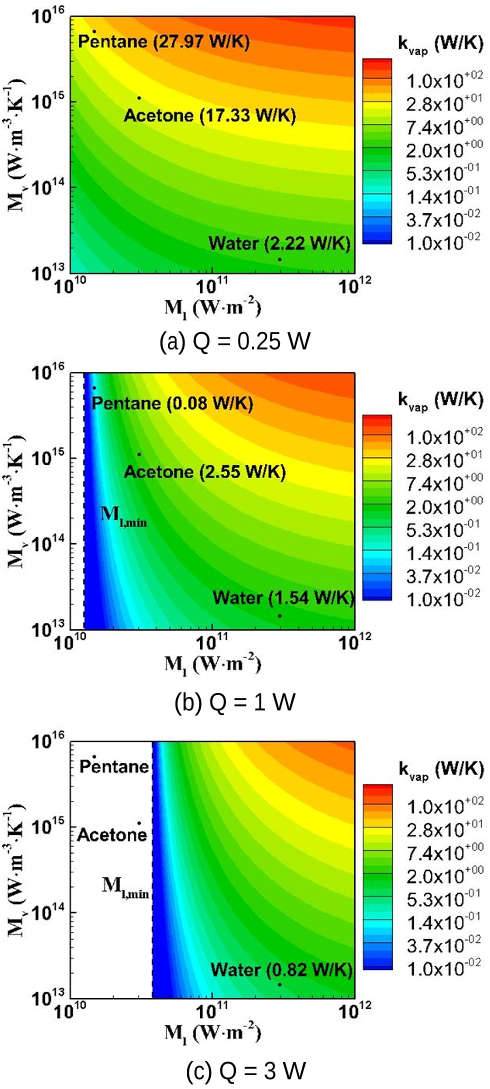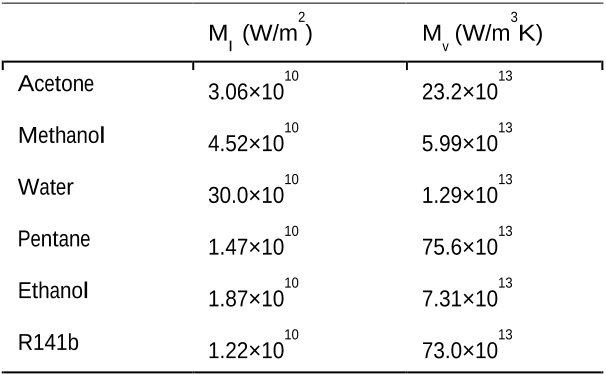Q1. What have the authors contributed in "Working-fluid selection for minimized thermal resistance in ultra-thin vapor chambers" ?
A working fluid is sought in this case that provides the minimal thermal resistance while ensuring a capillary limit is not reached at the target operating power.



